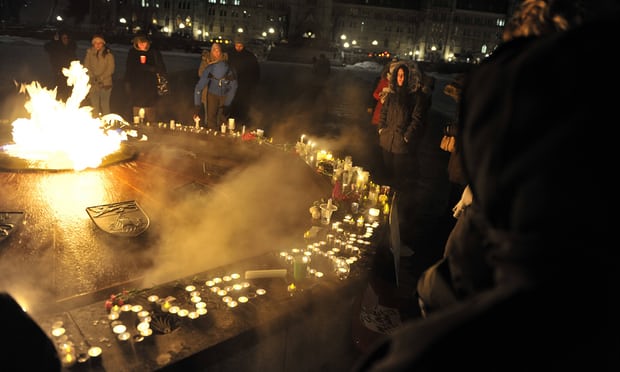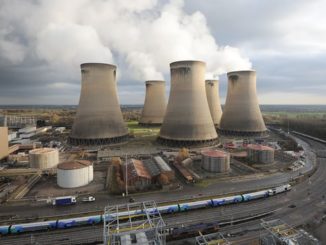
The centennial flame is a popular attraction in Ottawa, but it could be replaced with an ‘alternative sustainable approach’
The Canadian government’s efforts to cut the country’s carbon emissions have found a new target: a small flame that has burned on Parliament Hill for more than 50 years.
The centennial flame in Ottawa was first unveiled during celebrations marking the 100th anniversary of the Canadian confederation. Initially envisioned as a temporary installation, the flame remained so popular with visitors that it has continued to burn ever since.
But the federal government has announced that it is now exploring a number of options to reduce the environmental impact of the flame, one of which includes swapping the fire with LED lights.
A spokesperson with Public Services and Procurement Canada, the government agency tasked with overseeing the project, confirmed it is “exploring options for alternative sustainable approaches to fuel the centennial flame”.
Federal government offices have come under pressure to reduce or eliminate carbon dioxide emissions resulting from daily operations as part of the government’s climate strategy.
The flame is fueled by natural gas ferried across the country from western Canada, a region of the country where environmental groups and indigenous activists are currently protesting against pipeline expansions and carbon emissions from tar sands.
In September 2017, the government attempted to decrease the emissions of the flame by striking a “net zero” deal with Bullfrog Power, which provides gas to the flame. The energy company offsets the emissions from the flame by pumping biogas – a cleaner alternative – into its existing pipeline infrastructure in order reducing emission in a separate location. Bullfrog Power declined to comment on the extent of emissions offset by the deal which currently costs the government US$15,000 a year
The proposed change would not be the first time the monument – a circular fountain with plaques commemorating the dates each province and territory became part of Canada – has undergone a significant makeover.
Last year, the government spent $650,000 to add an additionally territory, Nunavut, to the monument. The flame has been extinguished on a number of occasions, often the result of poor weather. In 2002, the prime minister of the day, Jean Chrétien, ordered the flame extinguished and covered to avoid damage during the G8 protests in Ottawa.
But if the plan to scrap the flame proceeds, the move would largely be symbolic: Canada emitted 722 megatonnes of carbon dioxide in 2015, making it one of the highest per capita carbon emitting nations in the world, largely a result of its resource-intensive economy, size and climate.
• This article was corrected on 26 April 2018. The original gave 2008 as the date Jean Chrétien had the flame put out.
Source: https://www.theguardian.com/world/2018/apr/25/canada-ottawa-centennial-flame-replaced-climate-change
Visits: 77




Be the first to comment